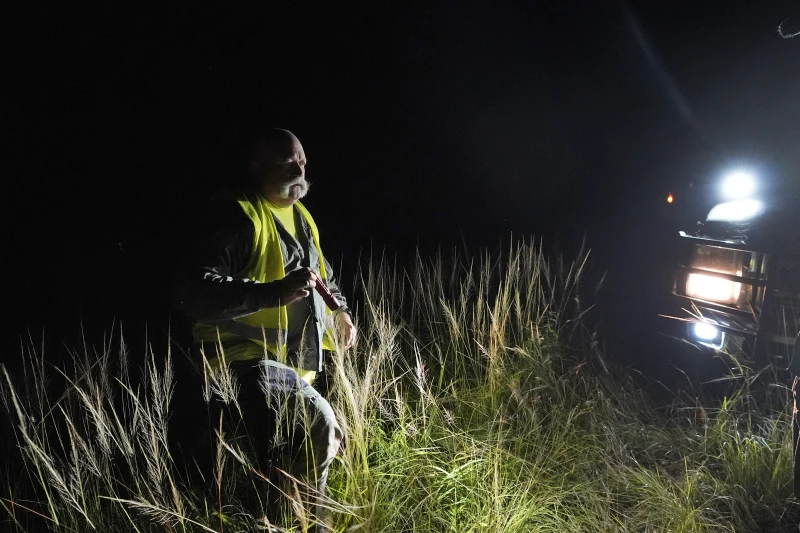The Florida Everglades, a unique and delicate ecosystem characterized by its vast wetlands, diverse flora and fauna, and historical significance, is facing a critical ecological challenge: the proliferation of the Burmese python.
These non-native constrictors, inadvertently introduced into the region, have become a pervasive threat to native wildlife, fundamentally altering the ecological balance that sustains this rich environment.
With the advent of initiatives such as the Florida Python Challenge, spearheaded by the Florida Fish and Wildlife Conservation Commission (FWC), the state is making concerted efforts to address this pressing issue.
The story of Thomas Aycock, an experienced python hunter and a member of the Swamp Apes veterans’ nonprofit organization, exemplifies the individual and collective endeavors aimed at combatting this invasive species.
The emergence and rapid spread of the Burmese python in the Everglades can be traced back to several factors, including accidental releases and the pet trade.
Over the years, these large constrictors have thrived in the humid and subtropical climate of Florida, leading to a dramatic decline in native wildlife populations.
According to estimates by the U.S. Geological Survey (USGS), tens of thousands of pythons now inhabit South Florida, contributing to alarming reductions in populations of raccoons, opossums, and bobcats—species that play critical roles in maintaining the ecological integrity of the Everglades.
For instance, a 2012 study conducted by the USGS revealed a staggering 99.3 percent decline in raccoon populations, illustrating the profound impact these invasive predators have inflicted on local ecosystems.
The Florida Python Challenge is not merely a hunting competition; it serves as an essential element of state-sponsored efforts to control and manage the invasive python population.
The competition attracts hundreds of participants, eager to contribute to the cause while competing for monetary prizes. For many, like Aycock, the challenge combines passion for wildlife conservation with a sense of camaraderie and personal fulfillment.
Aycock’s dedication to both hunting pythons and preserving the Everglades underscores the complex relationship between invasive species management and environmental stewardship, showcasing a narrative where personal goals align with larger ecological imperatives.
The economic incentives associated with python management also play a crucial role in attracting individuals like Aycock to the trade.
Florida’s contract system compensates hunters at a rate of $13 per hour while patrolling the swamps and up to $50 for the first four feet of python, with an additional $25 per foot for larger specimens.
While this may not provide a sustainable full-time income, it offers supplemental income opportunities for those who are engaged in environmental conservation and management.
This aspect highlights the intersection of economic necessity and environmental responsibility, as individuals are drawn into this effort through incentives while simultaneously addressing a significant ecological threat.
Capturing a python is not a straightforward task; Florida’s legislation prohibits the use of firearms for this purpose, necessitating a hands-on approach to remove these large snakes from the wild.
As Aycock drives through the darkened wetlands, equipped with a spotlight and knowledge accumulated over years of experience, he embodies the skills and dedication required to tackle this challenge.
The image of Aycock and other members of the Swamp Apes positively contributes to the narrative around environmental conservation, demonstrating that even the most arduous tasks can provide therapeutic benefits and foster community ties through shared missions.
The Swamp Apes, founded by Tom Rahill, represent a unique synthesis of wildlife management and veterans’ rehabilitation. This nonprofit organization allows veterans to engage meaningfully with nature while addressing the invasive python issue in Florida.
The story of Aycock and his fellow hunters serves as a testament to the innovative ways communities can mobilize in response to environmental crises, leveraging individual skills for the benefit of the greater ecosystem.
In the intricate and often perilous endeavor of capturing Burmese pythons, a species that has proliferated in the wild due to the absence of natural predators and possesses the formidable ability to consume prey whole, the methodology employed by seasoned hunters is both nuanced and demanding.
As articulated by Rahill, the approach to handling these constrictors requires a delicate balance of caution and assertiveness; rather than resorting to aggressive tactics such as jumping on the snake, a more effective strategy involves a gradual and gentle approach that allows the hunter to acclimate to the animal’s movements before attempting to pick it up.
This technique underscores the importance of understanding the creature’s behavior, as exemplified by Aycock’s harrowing experience with a 17-foot python, which necessitated a careful choreography of movement to avoid provoking the snake into a defensive strike.
The complexities of this pursuit are further compounded by legal regulations that mandate the swift transfer of captured snakes to wildlife authorities, a process that is fraught with ethical dilemmas, as hunters like Aycock often grapple with the grim reality of euthanizing these majestic reptiles following their capture.

The emotional toll of such actions is palpable, as Aycock candidly expresses his aversion to killing snakes, despite recognizing the necessity of the task within the context of invasive species management.
The unpredictable nature of snake hunting, characterized by long stretches of inactivity punctuated by moments of exhilarating discovery, encapsulates the duality of the experience—one that is marked by both the thrill of the chase and the weight of responsibility that comes with it.
As Aycock reflects on the adrenaline rush that accompanies the sighting of a Burmese python, it becomes evident that this pursuit is not merely a job but a complex interplay of passion, duty, and ethical consideration, wherein the hunters must navigate their own emotions while contributing to the broader ecological balance.
Moreover, awareness raised through events like the Florida Python Challenge transcends the immediate goals of python removal.
The presence of celebrities and media coverage amplifies the urgency of addressing invasive species management and fosters public engagement.
These efforts serve to educate the broader population about the nuances of wildlife conservation and the importance of protecting native species from the clutches of apex predators such as the Burmese python.
In conclusion, the plight of the Burmese python in the Florida Everglades compels action that is as multifaceted as the ecological challenges it presents.
The combined efforts of dedicated hunters like Thomas Aycock, state-sponsored initiatives, and community organizations such as the Swamp Apes reflect a societal commitment to maintaining the ecological balance within this irreplaceable ecosystem.
As invasive species continue to pose critical threats to biodiversity worldwide, the story of the Everglades serves as an urgent reminder of our responsibility to safeguard native habitats.
Collective action, informed by awareness and personal commitment to conservation, is paramount in preserving the delicate interplay of life within our planet’s varied ecosystems.
